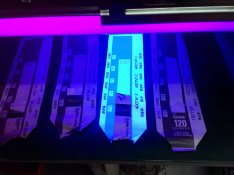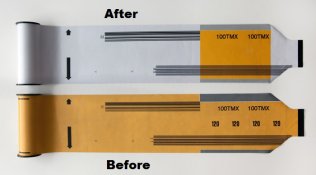I have no doubt that the process for making the backing paper became more modern over the years but...
If they could mass produce a good and reliable backing in 1901, it stands to reason that it would not be that tough today.
Here are a few companies that might want Kodak's or Ilford's business, I'd bet there are more.
http://onyxpapers.com/services/
http://voith.com/en/markets-industries/industries/paper/paper-grades/specialty-papers--12788.html
http://mpm.com/products-and-capabilities/custom/
Some good points there. But we also need to consider many of today's films are faster and cover a broader spectral range than in 1901. Then we also don't appear to know yet 100% whether the problem is from light or chemicals. I still find myself wondering if the problem is really the paper itself, or more likely the final overprinting of the numbers, etc. on the paper. There have been a lot of changes in printing inks since 1901 -- probably just since circa 1980 or so in response to environmental concerns.
One might think it wouldn't be too challenging to come up with a series of tests pressing film against the printed paper with varying pressures, temperatures, and humidity levels -- and time periods. Such tests would ideally happen periodically, especially on creation of a new batch of paper. (Of course, for all we know, the manufacturers may do that.)
It might be interesting, when the problem appears, to grab unexposed rolls from the same package (where possible) and prior to going through a camera unroll one and look at the emulsion under a microscope under angled light to reflect from the surface. One could also shoot some at a gray background and develop it, etc., etc. (Likely this is an argument for buying same batch quantities and do-it-yourself testing.)
Since My Faire Spouse will be retired this coming year, I'm contemplating several semi-major trips, assuming for at least one I'll take a TLR loaded with ISO 400 film. (On more leisurely automobile travels I lean toward the Bronica and a tripod with ISO 100 stuff.) I've so far not seen a problem with 400TX, but the rolls I have, were in hand for a year or two -- I'm thinking that backing paper is also different from further back. This whole discussion doesn't make me feel as good as I would wish! But then we seem to thrive on FUD lately. I had been contemplating some comparisons between several such films, including the one under current discussion before my next purchase. I've not stocked up on film for the trip(s) yet, so I guess I will wait another month or two for more data (as well as shoot a few of the rolls I have).
Maybe a low level of complaining could also be acceptance of "the Holga mystique!" Scary! :munch:






